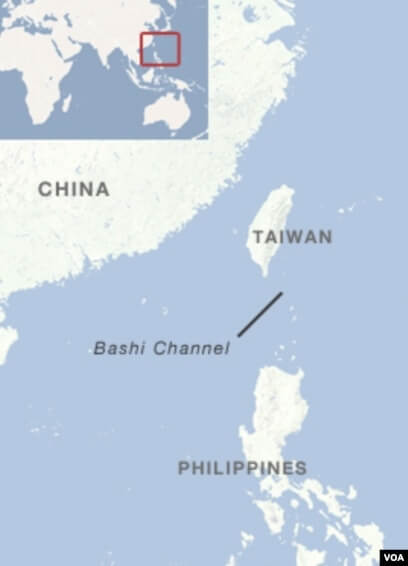
Overview
Most Americans haven’t heard of the Bashi Channel—the narrow stretch of water between Taiwan’s southern tip and the northern Philippines—but it’s now one of the most consequential pieces of ocean on Earth. If China ever moves on Taiwan, this is where the attempt to break out to the Pacific—and the effort to stop it—will collide.
The Geography of Power
The Bashi Channel is one of only two deep-water exits from China’s coastal seas into the open Pacific (the other is the Miyako Strait near Okinawa). Control Bashi and you can bottle up much of the PLAN inside the First Island Chain. Lose it and Beijing gains a southern flank on Taiwan and room to maneuver against U.S. and allied forces.
Logistics Decide Outcomes
Just north of the Channel sits Kaohsiung, Taiwan’s largest port and logistical heart. Fuel, bulk cargo, spare parts, and food flow through it. Any attacker would try to seize Kaohsiung and secure sea lanes through Bashi; any defender would fight to keep those routes open. No fuel, no fight.
The Philippines Is Now the Front Line
Across the Channel, the Batanes island group (fewer than 20,000 residents) has become a literal gate across the southern mouth of Bashi. U.S. and Philippine forces are training there to practice sea denial—airlifting in mobile, ground-based anti-ship systems like NMESIS (Naval Strike Missile, >300 km range) and integrating longer-range fires such as the U.S. Army’s Typhon launcher. The idea is simple: make the Channel too dangerous for hostile warships to enter.
How China Sees It
Beijing has repeatedly pushed carrier groups through Bashi to practice breaking into the Philippine Sea. At the same time, it leans on gray-zone pressure against Manila—harassment and intimidation below the threshold of open conflict—to pry the Philippines away from the alliance network that makes “closing the gate” possible. If the Philippines holds firm, the gate stays shut.
The Hidden Front: Undersea Cables
Nearly all trans-Pacific data—finance, commerce, command-and-control—moves via undersea cables, and a heavy share of those routes choke near the Bashi Channel. In a crisis, cable cuts can delay response, blind decision-makers, and sow confusion long before the first headline. Protecting, monitoring, and rapidly repairing these cables is now part of credible deterrence.
Why Americans Should Care
This isn’t “over there.” It’s about whether an authoritarian power can veto freedom of navigation, commerce, and connection in the Western Pacific. It’s about your bank traffic, our allies’ confidence in U.S. commitments, and whether we can prevent a war instead of clean up after one. People in Batanes already live with the consequences—panic buying when exercises begin, evacuation planning for 200,000 Filipino workers in Taiwan. Deterrence is not abstract for them. It shouldn’t be for us.
Implications for the Navy
• Presence over slogans. You can’t surge trust or access. Forward naval and Marine forces, pre-positioned stocks, and real relationships with Manila are non-negotiable.
• Magazines over posters. Deterrence here is fuel, reloads, spares, repair yards, and enough long-range anti-ship weapons to make break-out math ugly.
• Industrial base over intent. Plans assume ships on station, subs forward, Marines supplied, and damage repaired fast. That takes hulls, welders, parts, and allied capacity—not just strategy documents.
• Cables over headlines. Fund seabed awareness, rapid cable repair, and legal authorities to protect critical undersea infrastructure alongside allies.
• Allies over ego. Japan blocks Miyako; the Philippines helps close Bashi; the U.S. backstops both. Invest accordingly.
What We Must Do Now
• Harden and expand access in Northern Luzon and Batanes, with resilient logistics and fuel.
• Accelerate delivery and co-production of long-range precision fires and maritime ISR with Manila and Tokyo.
• Grow sealift, tenders, and expeditionary repair so forces can persist without fixed bases.
• Fund cable-security programs: mapping, patrol, autonomy, and repair ships.
• Communicate clearly to the American public why this matters—and what success looks like: peace through strength, not war by neglect.
Closing
Geography doesn’t change—but power can. The Bashi Channel is the toll gate between the South China Sea and the Pacific. The Philippines sits in the booth. The United States stands beside them. China wants the gate open. Our job is to make sure it stays free—and too costly to force.
That’s why we launched Charting the Course: Voices That Matter — a 24-part educational series breaking down how we got here, what went wrong, and what must happen next. Our goal is simple: educate the public, connect the dots, and build the support needed to close the readiness gap before it’s too late.
Let’s roll.

